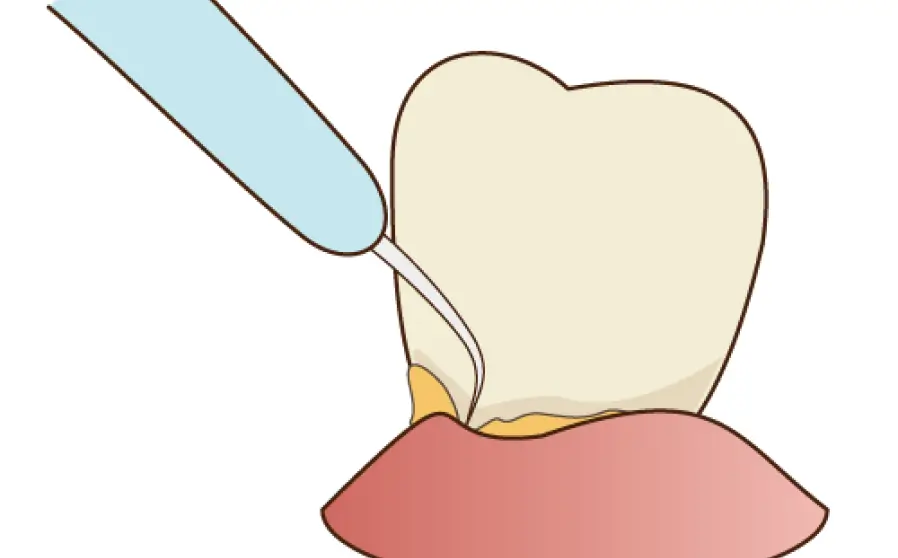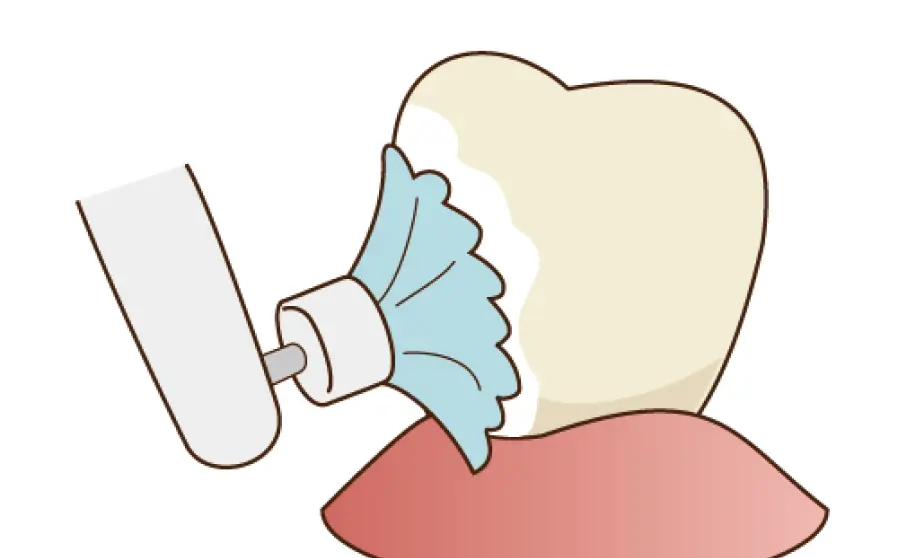




Medical
Cleaning
What is scaling?
Scaling removes plaque, tartar, and other debris on the surface of the teeth and between the teeth that cannot be removed with brushing alone at home.

Why is scaling necessary?
- reducing the risk of cavities
- reducing gum inflammation
- removing stains
- maintaining gum health
- reducing the risk of periodontal disease
- reduction in periodontal pocket depth
- maintaining oral cleanliness
- improving bad breath
Main reason for scaling treatment
removal of plaque and tartar
Areas that cannot be completely cleaned with brushing alone, as well as plaque and tartar adhering to the surfaces and between the teeth, are effectively removed using specialized tools and techniques.This helps maintain oral cleanliness and reduces the risk of periodontal disease and cavities.
prevention and management of periodontal disease
Plaque and tartar are major causes of gum inflammation and periodontal disease. Cleaning helps in the prevention and management of periodontal disease. Regular cleaning helps maintain gum health and can also reduce the depth of periodontal pockets.
early detection of cavities
During cleaning, a thorough examination of the surfaces and gaps between the teeth can be performed. Dentists can detect and treat cavities in their early stages, preventing further progression and maintaining dental health.
removal of stains from tobacco and drinks
Consumption of tobacco, coffee, tea, and certain lifestyle habits can lead to the buildup of staining substances on the surface of the teeth. Cleaning can remove these staining substances and help maintain whiter teeth.
improvement of bad breath
Plaque and tartar in the oral cavity can lead to the proliferation of bacteria that cause bad breath. Cleaning helps maintain oral cleanliness and contributes to the improvement of bad breath.
main treatment methods for cleaning
These treatment methods are chosen and implemented by the dentist based on the patient’s oral condition. Regular cleaning and oral care habits are effective in maintaining dental health and preventing periodontal disease and cavities.
scaling (tartar removal)
This treatment involves using special hand tools or ultrasonic scalers to remove tartar (calculus) from the surfaces and between the teeth. Tartar is formed when plaque hardens and is difficult to remove with regular brushing. By removing tartar through scaling, you can control gum inflammation and the progression of periodontal disease, as well as restore oral cleanliness.
polishing
This treatment involves polishing the surfaces of the teeth using specialized polishing agents. This removes staining substances and plaque from the surfaces of the teeth, restoring a smooth feel to the teeth. Additionally, polishing can restore the shine of the teeth and create a more beautiful smile.
instruction on the use of interdental brushes and floss
Dentists may provide instruction on the proper use of interdental brushes and floss during cleaning. This helps effectively remove plaque and food particles between the teeth and improve oral hygiene.
oral health education
Dentists provide appropriate oral hygiene advice during cleaning. Instruction includes proper brushing techniques, how to choose toothbrushes and interdental brushes, and the use of mouthwash, covering all aspects of daily oral care. This enables patients to acquire the skills and knowledge needed to maintain their own oral health.


If you neglect to receive regular cleanings...
progression of periodontal disease
If plaque and tartar are left untreated, bacteria in the oral cavity can proliferate, potentially leading to gum inflammation and progression of periodontal disease. Periodontal disease can cause symptoms such as gum swelling, bleeding, pus from the gums, and loose teeth. In severe cases, it can also lead to tooth loss and loss of jawbone.
progression of cavities
When plaque and tartar are left on the surface of the teeth, the risk of tooth decay caused by acids increases. Cavities can erode the enamel of the teeth, leading to demineralization and the formation of holes. Advanced cavities can reach the nerves and blood vessels, potentially requiring root canal treatment or extraction of the tooth.
worsening of bad breath
When bacteria proliferate due to plaque and tartar, it can cause bad breath. Neglected plaque and tartar can worsen bad breath.
staining and deterioration in appearance
Staining substances from tobacco and beverages can adhere to the teeth, causing them to become yellowed or discolored. If left untreated, these staining substances can accumulate further, worsening the appearance of the teeth.
deterioration of dental health
Failure to receive regular cleanings can lead to a deterioration in dental health. Dental issues and pain may arise, leading to problems such as tooth loss and reduced chewing function.
About getting scaling done at our clinic
With the increased awareness of dental and oral health, many people now seek regular scaling. The removal of accumulating tartar and cleaning is primarily performed by the dentist.
It is said that stains that cannot be removed with your own toothbrush accumulate in 3 to 4 months, so we recommend scaling every 6 months.
the process of cleaning
1.
STEP 1
If tartar is present, an ultrasonic device is used to break down and remove the tartar through vibrations. The number of sessions may vary depending on the amount of tartar present.
2.
STEP 2
After removing tartar with the ultrasonic device, the roughened tooth surfaces are polished using a brush and a selected paste appropriate for the oral cavity.
3.
STEP 3
Since it is difficult to insert machines or brushes between the teeth, floss or interdental brushes are used for cleaning these areas.
our clinic's recommendations
air polishing (AirFlow)
Air polishing can effectively remove stains from between teeth and overlapping areas that are difficult to reach with a toothbrush, without damaging the teeth. The treatment method uses a specialized machine called AirFlow, which sprays a water mist combined with ultra-fine powder (amino particles) to remove stains from the surface of the teeth.
AirFlow not only removes staining but also eliminates plaque, which is a cluster of bacteria, thus offering benefits in preventing periodontal disease and cavities. It feels incredibly clean! It is effective when done after tartar removal. Those with heavy staining may require multiple sessions.
.webp)

